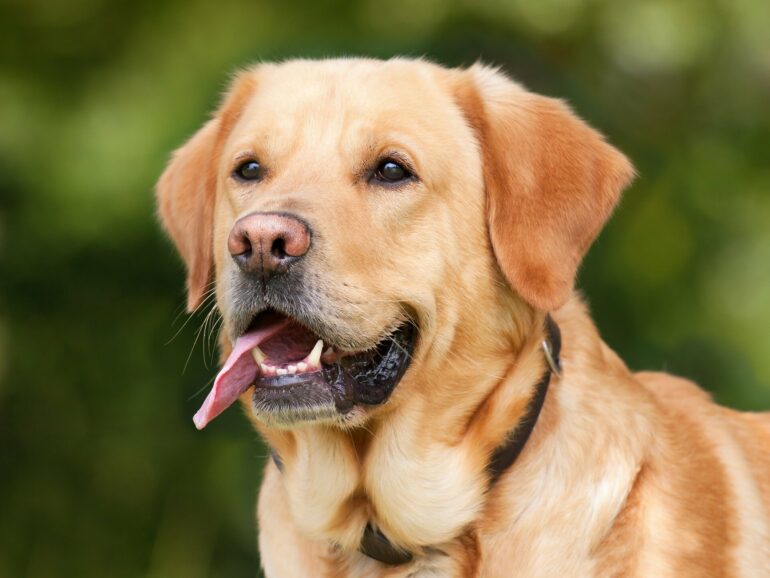Dogs walked every day by their owners are less aggressive. Dogs owned by women bark less at strangers. Heavier dogs tend to be less disobedient than lighter pets. Pugs, Bulldogs, Shih Tzus and other short-snouted breeds may be more badly behaved than medium- and long-snouted dogs, such as Golden Retrievers or the caramel-colored mixed-breed dogs popular in Brazil.
These are some of the findings of a study conducted by researchers at the University of São Paulo (USP) in Brazil. The study sample comprised 665 pet dogs of different breeds as well as mongrels.
An article on the study, published in the journal Applied Animal Behaviour Science, focuses on the correlations between aggressiveness and morphological, environmental, and social factors in the pet dogs analyzed. According to the authors, aggressiveness was influenced both by physical traits such as weight and skull morphology and by social and environmental factors such as the type of household, the animal’s life history and the owner’s gender and age.
The findings confirmed the researchers’ hypothesis that behavior is not only learned or influenced by genetics but also the result of constant interaction with the environment.
“The results highlight something we’ve been studying for some time: behavior emerges from interaction between the animal and its context. The environment and the owner-pet relationship, as well as morphology, are all factors that influence how pets interact with us and how we interact with them,” said Briseida de Resende, last author of the article and a professor at the Institute of Psychology (IP-USP).
In the study, which was conducted during the COVID-19 pandemic, the owners of the 665 dogs in the sample completed three online questionnaires on themselves, the characteristics of their pets, the environment they lived in and any aggressive behavior, such as barking at or attacking strangers.
The questionnaires were produced by Natália Albuquerque, a researcher at IP-USP, and Carine Savalli, a professor at the Federal University of São Paulo (UNIFESP).
“The owner’s gender was found to be a good predictor of behavior toward strangers, in that absence of aggressiveness was 73% more frequent among women’s dogs,” said Flávio Ayrosa, first author of the article.
The pet’s sex also appears to have influenced aggressiveness. “The likelihood of aggressive behavior toward the owner was 40% lower among female dogs than among males,” Ayrosa said. “Snout length was even more significant: aggressiveness toward the owner was 79% more likely among brachycephalic than mesocephalic dogs.”
In brachycephalic dogs, the snout is short and the cranium rounded. In mesocephalic breeds, the length and width of the skull are intermediate, and it has a squarish or triangular shape.
The study also found that the heavier the dog, the less likely it was to display aggressiveness toward its owner. The probability of aggressive behavior was found to decrease 3% per extra kilogram of body mass.
The owner-related findings are not cause-and-effect correlations, Ayrosa stressed. “We found relationships, but it’s impossible to say which comes first. In the case of the factor ‘walking the dog,’ for example, it may be that people walked their dog less because the animal was aggressive, or the dog may have become aggressive because the owner didn’t take it out enough,” he said. “Traits such as weight, height, cranial morphology, sex and age influence the interaction between dogs and their environment. They may spend more time inside the home because of them, for example.”
Historically, canine aggressiveness used to be associated solely with breed, but there has been a paradigm shift in the last ten years, owing to research linking behavioral profiles to factors such as the age and sex of the dog, and its metabolism and hormones.
In Brazil, the study conducted by the group at IP-USP was the first to analyze morphology and behavior, including aggressiveness, in mongrels, or dogs of undefined breed. “Researchers have only recently begun to investigate the influence of factors relating to the animal’s morphology, life history and origin [purchased or adopted], as well as characteristics of the owner, as our study did,” Ayrosa said.
More information:
Flavio Ayrosa et al, Relationships among morphological, environmental, social factors and aggressive profiles in Brazilian pet dogs, Applied Animal Behaviour Science (2022). DOI: 10.1016/j.applanim.2022.105766
Citation:
Aggressiveness of pet dogs is influenced by life history and owner’s characteristics, study suggests (2023, January 12)



